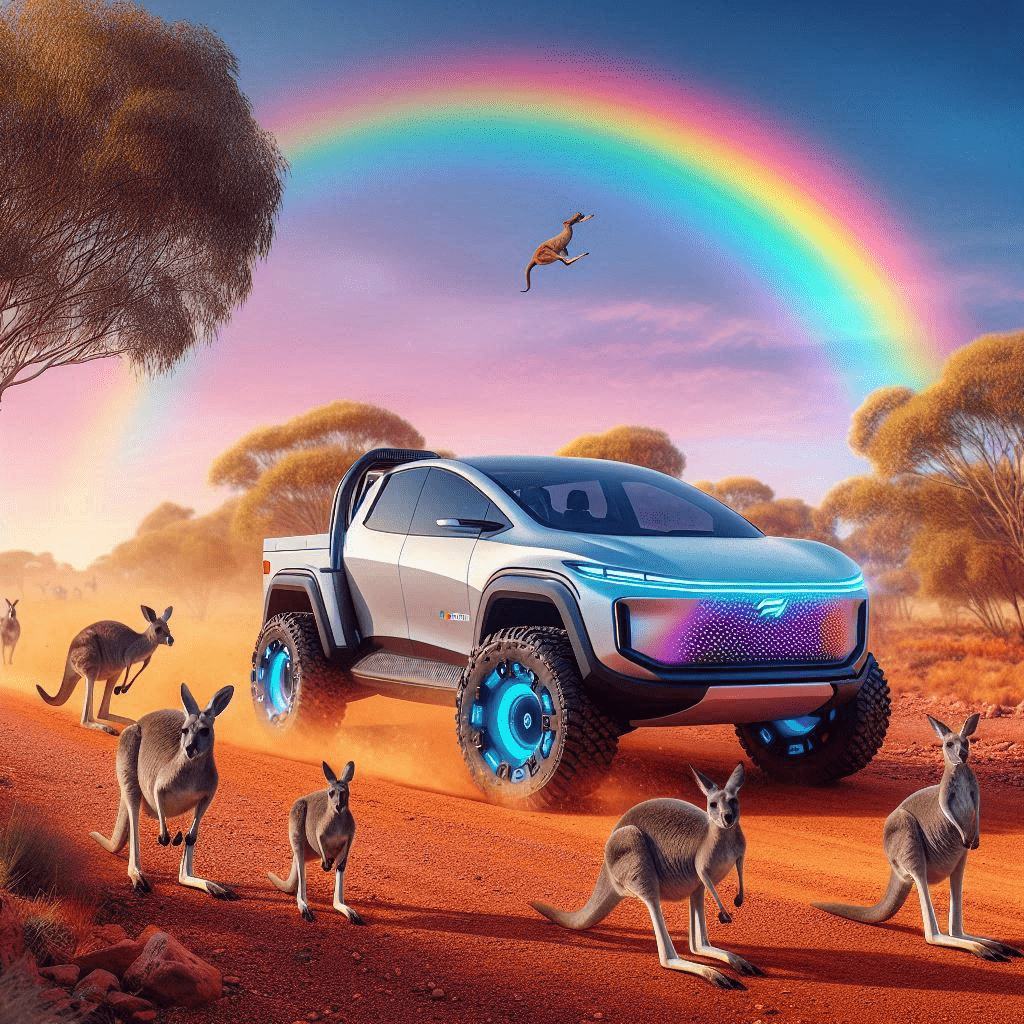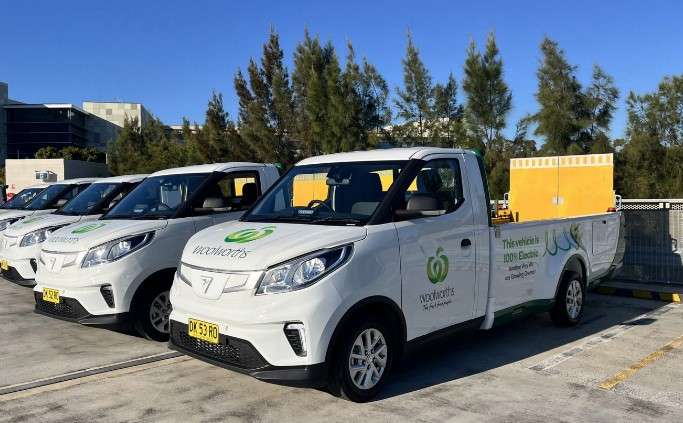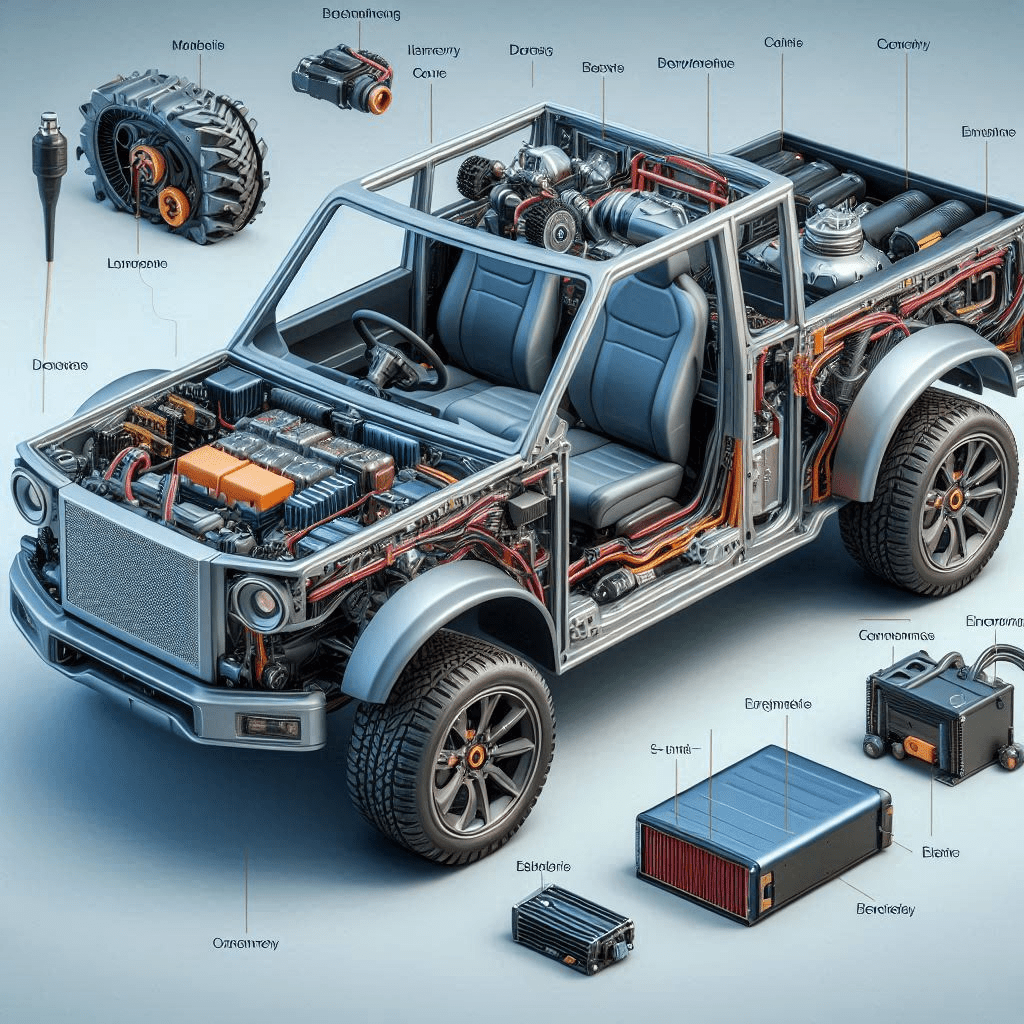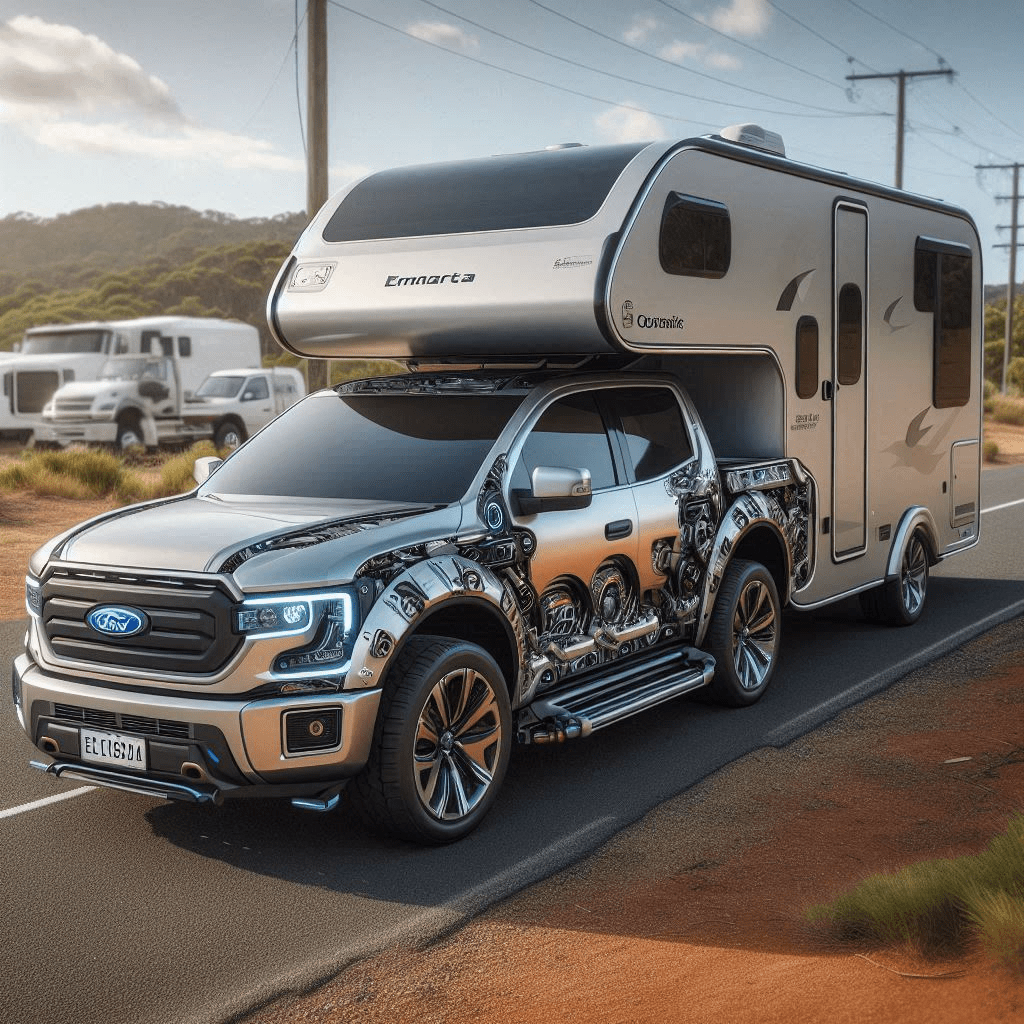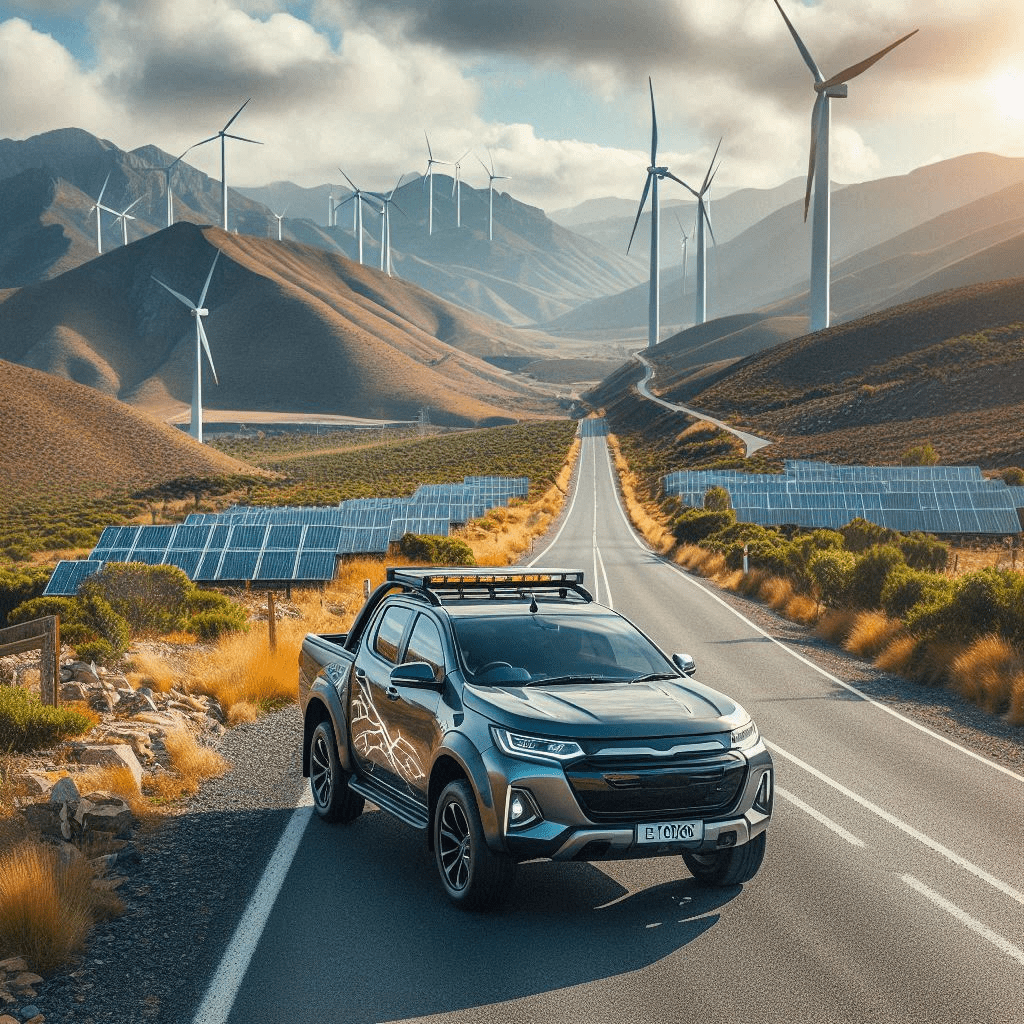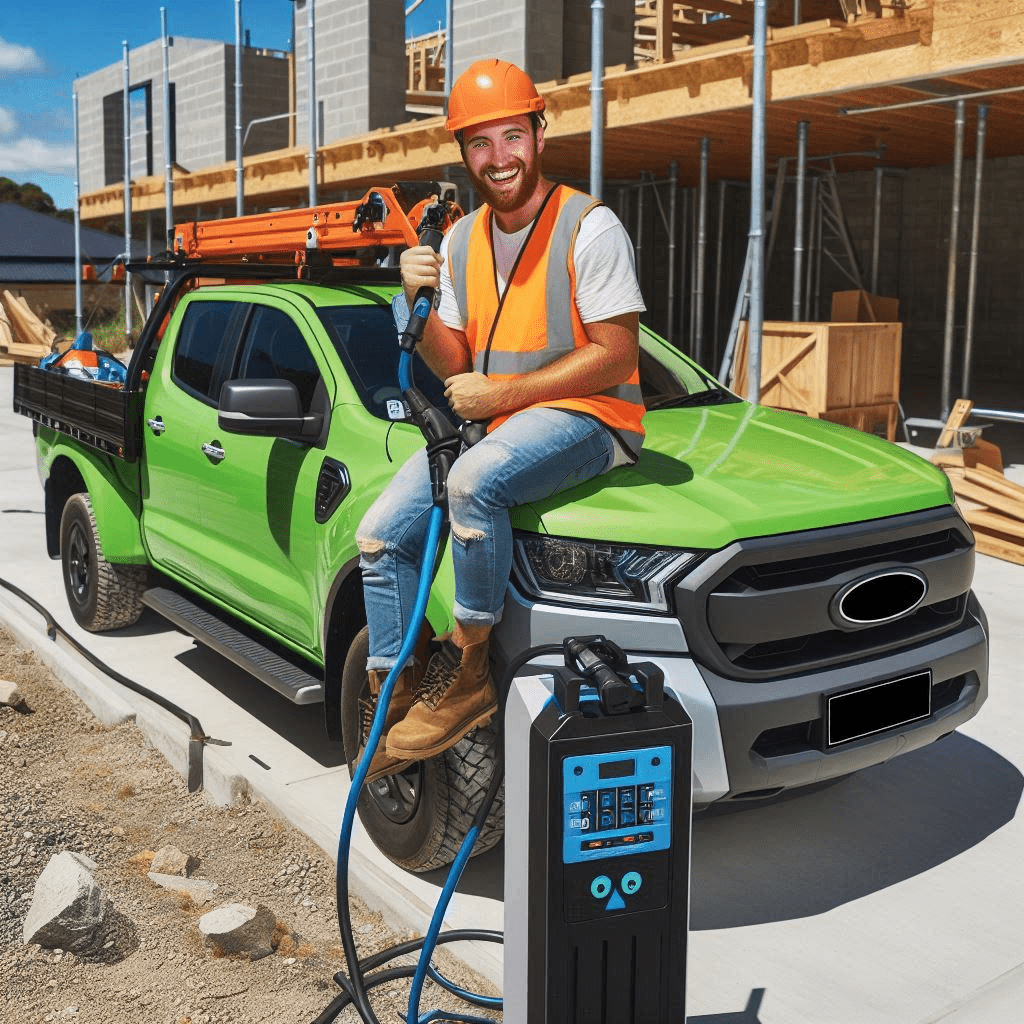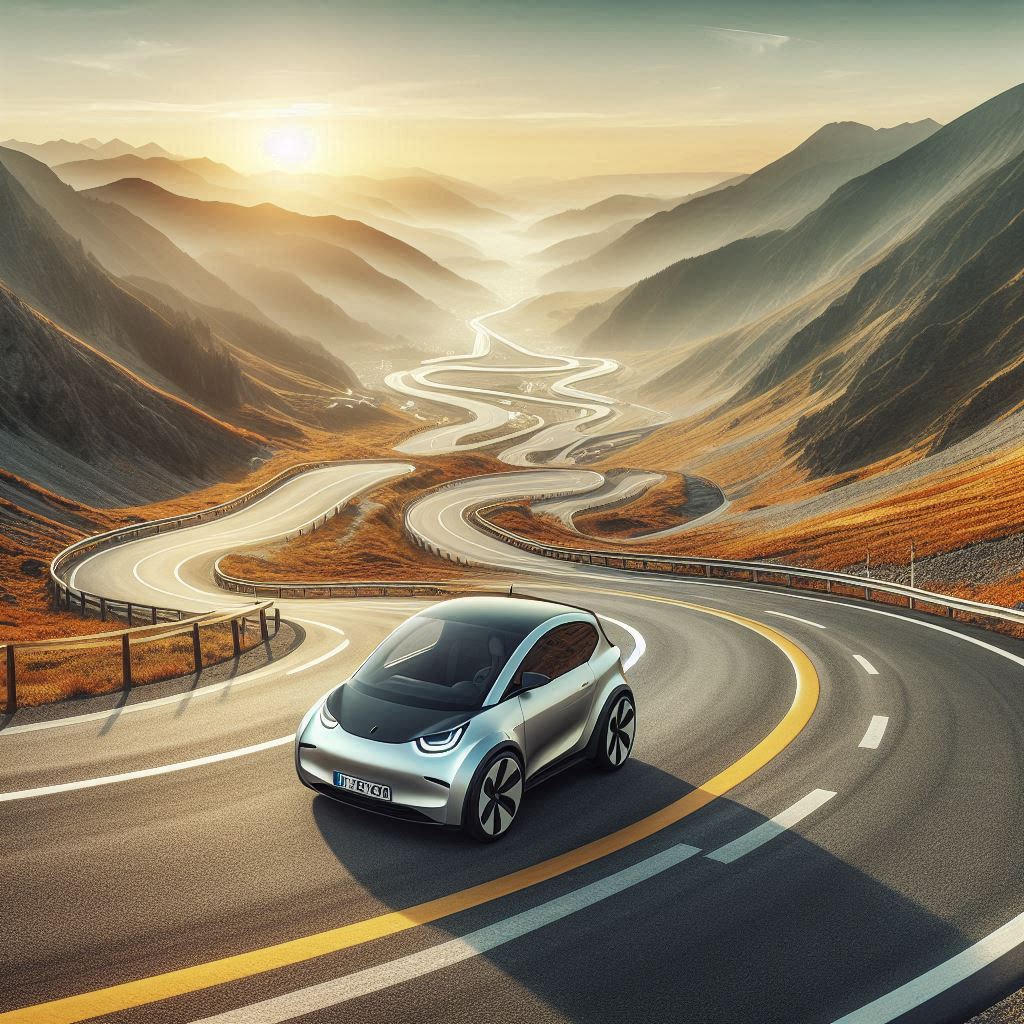The Unicorn: The Electric Ute
Utes have become a staple on Australian roads, and with the rise of electric vehicles, you might be wondering where these unicorns are. In this ultimate guide, you’ll discover everything you need to know about electric utes, including their benefits, the latest models available, upcoming releases, and insights. Whether you’re considering making the switch or just want to stay informed, this guide will equip you with the knowledge you need to navigate the exciting world of electric utes in Australia.
It’s a rapidly changing landscape and we’re nowhere near maturity in the electric ute space yet… so stay tuned for updates as newer models become available here. Hopefully we won’t be searching for unicorns for too much longer.
Understanding Electric Utes
Definition and Overview
Any vehicle that combines the utility of a traditional ute with the efficiency of electric propulsion is classified as an electric ute. Lower running costs are often a key factor for a vehicle purchase. An electric car can certainly deliver with lower fuel and maintenance costs. These vehicles eliminate reliance on fossil fuels, offering a more sustainable option for users. Electric cars, including utes, are designed for both personal and commercial use. This presents a big opportunity in markets like Australia, where utes comprise 20 percent of all new vehicle sales.
Benefits of Electric Utes
An electric ute offers significant advantages over traditional internal combustion engine (ICE) vehicles, including lower emissions and reduced operating costs. Transitioning to electric utes can save you money on fuel and maintenance, while also contributing to lower carbon footprints, which is particularly important in a country where these vehicles cover approximately 40 percent more distance than average cars.
Understanding the benefits further, electric vehicles provide instant torque and rapid acceleration, enhancing performance when hauling heavy loads. Many models boast substantial driving ranges, with ute options that can offer up to 800 km on a single charge, or 400km if towing. This versatility allows you to power tools and other devices directly from your ute, putting the utility right back into the ute for tradespeople and outdoor enthusiasts.
Challenges Facing Electric Utes
Electric utes face several challenges that have hindered widespread adoption, including high upfront costs and limited model availability. In 2023, for instance, the only model available in Australia was the LDV eT60, priced at nearly double its diesel counterpart, which can deter potential buyers.
Many drivers unfamiliar with electric vehicle capabilities may be concerned about range and towing capacity. While electric cars can perform admirably, towing heavy loads naturally reduces their driving range, which has raised questions about their practical applications in various industries. Addressing these concerns is crucial for accelerating the transition to electrification in the ute segment.
Charging time is a concern for many. Having to wait hours to charge your ute while on the highway isn’t acceptable, so what’s being done to alleviate these concerns? Is charging time realkly an issue, or is it a misconception. More needs to be done about alleviating range anxiety and concerns about charging. Both infrastructure availability and charging time rate highly as concerns for potential EV drivers.
Types of Electric Utes Available in Australia
Clearly, the growing demand for electric utes in Australia has led to a variety of options for you to consider. As you explore what’s available, it’s vital to understand the different types on the market. Each type comes with its own set of advantages, capabilities, and specifications suited to your needs. Below is a snapshot of these electric vehicles.
| Type of Electric Ute | Key Features |
|---|---|
| Full Battery | Powered exclusively by electric batteries, offering zero emissions. |
| Plug-in Hybrid | Combine electric and traditional fuel, providing dual power sources. |
| Fuel Cell | Use hydrogen fuel cells to generate power, resulting in limited emissions. Although hydrogen production is inherently dirty at present, far more so than electricity generation. |
| Converted | Traditional utes retrofitted with electric drive systems for specialised use. |
| Other | Keep your eyes peeled, car manufacturers are dreaming up alternatives. It’s yet to be seen which will take off. |
Full Battery Electric Utes
Types of full battery electric utes are designed to operate solely on electric power. These vehicles have no internal combustion engine, meaning they offer zero tailpipe emissions. Models like the LDV eT60 currently showcase a range of up to 330km, making them a practical option for everyday use while significantly reducing fuel costs and carbon footprints. 330km isn’t going to cut it for a tradie with a boat to tow up the coast though.
Plug-in Hybrid Electric Utes
If you’re considering versatility, plug-in hybrid electric utes utilise both electric batteries and traditional internal combustion engines. This combination not only allows for zero-emission driving in some scenarios but also gives you the flexibility to use diesel or petrol when needed, particularly on longer trips.
For instance, the forthcoming BYD Shark plug-in hybrid ute offers impressive engine power combined with a battery range. It features a total output of 320kW, allowing you to enjoy the benefits of electric driving, along with a more extensive range for longer journeys, making it ideal for both daily commutes and work tasks.
Fuel Cell Electric Utes
Fuel cell electric utes utilise hydrogen to generate electricity through a chemical reaction, producing only water vapor as a byproduct. These vehicles represent an exciting frontier in clean energy transportation, and they have specific advantages, such as quick refueling times and longer ranges compared to battery electric models.
It’s worth noting that fuel cell utes are still in the development stages in many markets, but they offer immense potential. With vehicles like those from the Geely Radar brand expected to launch soon, these utes might become a viable option for your environmentally friendly transport needs.
Hydrogen isn’t readily available yet, and what is available is created primarily from fossil fuels. While tailpipe emissions are zero, the fuel production emissions are high.
The variety of electric utes available means you have more choices than ever, catering to different preferences and requirements.
Key Factors to Consider When Choosing an Electric Ute
All decisions regarding your next vehicle purchase should consider various key factors to ensure it meets your needs and expectations. In terms of selecting an electric ute, you should keep the following in mind:
- Battery Capacity and Range
- Towing Capacity and Payload
- Pricing and Incentives
- Charging Infrastructure Availability
- Driving habits – is it purely to get to or from work, or are longer trips needed?
- Where you live: can you charge at home, or work, or will you rely on public chargers?
Any of these elements could significantly impact your ownership experience and utility of the vehicle.
Battery Capacity and Range
You should evaluate the battery capacity and range of your electric ute, as these factors determine how far you can travel on a single charge. Most electric utes offer ranges between 330km to over 800km, depending on the model and battery size. Consider your daily driving and whether the vehicle can accommodate longer trips without frequent recharging.
Consider that having your ute plugged in while you’re working on building site, or overnight might just save you that weekly diversion to the petrol station. Your car can charge slowly throughout the day, or night, but so what if it’s slow? You’re working on other things, or sleeping and not having to go out of your way to the petrol station. You can always go to a fast charger if you need to (I haven’t been to a fast charger in months and I drive a lot).
Towing Capacity and Payload
Another aspect to consider is the towing capacity and payload of the electric ute you choose. Electric utes generally offer impressive towing capabilities, with some models surpassing 4.5 tonnes. Ensure that the ute can handle both your towing needs and the weight of any cargo you intend to carry, as this can influence your productivity in work and recreational activities. This is no different to choosing a traditional ute.
Choosing an electric ute with the appropriate towing capacity is vital if you plan to tow trailers, boats, or other heavy equipment. Always compare specifications to ensure the model you select meets your specific requirements without compromising performance or safety.
Running Costs
Off-peak electricity is a fraction of the cost of petrol or diesel. Even peak rate electricity at home is super cheap compared to fossil fuels. My costs have come down from over $250 a month to less than $25, a 90% drop in fuel costs.
Pricing and Incentives
If you’re budgeting for an electric ute, pricing is a significant consideration. Electric utes can be priced higher than their traditional diesel counterparts, with models like the LDV eT60 priced around $93,000. However, various government incentives may help lower the cost. Understanding the total ownership costs, including potential savings on fuel and maintenance, is imperative.
Electric vehicle purchase incentives, such as tax breaks or rebates, can play a crucial role in your buying decision. Research local and federal incentives available in Australia to make an informed financial decision and maximize your investment.
Charging Infrastructure Availability
Little can affect your electric ute experience more than the availability of charging infrastructure. Assess the local charging networks to ensure convenient access to charging points, especially if you plan to use your vehicle for long commutes or trips. Availability of fast chargers will also significantly reduce downtime when away from home.
Don’t discount home charging though. For the average ute driver, travelling less than 100km a day, this is easily topped up by plugging in to a home charger, or even trickle charging at the job site. You don’t need to be running off to fast chargers every day. Slower charging overnight is easier on your battery, and easier on you. You just plug in when you get home and unplug in the morning. You only need those faster chargers when travelling, and often you can slow charge at accomodation or job sites to get you through the days when you’re not on the highways.
Infrastructure developments are continuously expanding in Australia, with more charging stations appearing in urban areas and along major highways. Familiarise yourself with the charging networks available in your region to secure a worry-free ownership experience.
Top Electric Utes on the Market
Now, as the electric vehicle landscape in Australia evolves, various electric utes are making their mark in the market. With growing demand from tradies and off-road enthusiasts alike, it’s necessary to understand the options available today and those on the horizon.
Current Models
There’s currently only one electric ute available in Australia, the LDV eT60. Priced around $93,000, it features an 88kWh battery, providing a WLTP range of 330km, with a one-tonne tow capacity. This model represents the entry point for those interested in electric utes. Perfect for the tradie who just needs something to transport materials to site and run around town to jobs.
Upcoming Releases
Utes are set to expand significantly in the Australian market, with several exciting releases on the horizon. Notable models include the Tembo Tusker-D and Tusker-S, which are expected to arrive in 2024, priced from $74,000 and boasting up to 400km of range. Additionally, models from LDV, Kia, and Geely promise varied features and capabilities catering to specific needs.
Stay informed about these upcoming releases as they reflect advancements in technology. For instance, the LDV Maxus GST, projected for launch in 2024, offers impressive specs, including a 600km range and 746kW of power. Similarly, the Riddara by Geely aims to enter the Australian market with significant towing capacities and cutting-edge features, further diversifying your options.
Comparison of Features and Specs
For a clearer understanding of what each electric ute offers, you can compare key features and specifications across models:
Comparison Table
| Model | Key Features |
|---|---|
| LDV eT60 | 330km range, 88kWh battery, $93,000 price |
| Tembo Tusker-D/S | 400km range, $74,000 price, dual-cab options |
| LDV Maxus GST | 600km range, quad-motor, off-road features |
| Geely Riddara | 800kg payload, 3-tonne towing, advanced technology |
Features like range, price, and towing capacity will determine which electric ute fits your needs best. Knowing these comparisons helps you make an informed decision based on your lifestyle and driving requirements.
In an exciting turn of events, local manufacturer Ace-EV from South Australia are producing a range of light commercial vehicles for a variety of uses. These include electric utes, vans and other vehicles, in a push to revitalise the Australian Auto industry, provide local jobs and produce environmentally sustainable vehiicles here in Australia.
Features are continually evolving in the electric ute market, with manufacturers looking to incorporate capabilities that align with user needs. For instance, while the LDV eT60 serves as an entry-point vehicle, upcoming models like the Riddara and Maxus GST are designed to tackle more demanding tasks, offering advanced off-road functionalities and greater payload capacities. This ensures there’s likely an electric ute to suit your specific vehicle preferences.
The Ford F-150 Lightning will be popular with the familiar F-150, while model like the TEsla Cybertruck might be a bit more of a niche player for those looking for something different. As more models become available, choice will expand and we’ll start to see more variety in this fledgling EV market.
Tips for Transitioning to an Electric Ute
Transitioning to an electric ute can be a rewarding choice that benefits both your wallet and the environment. As you consider making this switch, here are some tips to keep in mind:
- Assess your driving habits and needs.
- Familiarise yourself with the available charging infrastructure in your area.
- Understand the maintenance requirements of electric vehicles compared to traditional utes. Hint: less maintenance, but there is still some.
- Research the towing capacity and payload limits of your chosen electric ute.
- Consider potential incentives or rebates for purchasing electric vehicles in Australia.
By following these tips, you’ll be better equipped to embrace the electric ute revolution.
Assessing Your Driving Needs
Now, it’s imperative to assess your driving needs before making the switch to an electric ute. Consider how far you drive daily, whether you frequently tow heavy loads, and if the typical range of electric utes meets your requirements. With the average distance driven by utes being around 40% more than standard cars, understanding your specific needs can help you select the right model that fits your lifestyle.
Understanding Charging Options
One key aspect of transitioning to an electric ute is understanding your charging options. With the growing network of charging stations across Australia, you’ll find public, home, and workplace charging strategies available to suit your needs. Knowing where and how you can charge your vehicle is key to a seamless transition.
Another important consideration is the charging speed and the types of charging ports available on your electric ute. Fast chargers can significantly reduce the time spent charging, offering up to 80% of a full charge in as little as 20 or 30 minutes. Additionally, installing a home charging station can enhance convenience and efficiency, enabling you to fully charge your ute overnight. Always ensure that the type of charger you choose is compatible with your vehicle’s charging specs.
Maintenance Considerations for Electric Utes
With electric vehicles, maintenance differs significantly from traditional internal combustion engine (ICE) utes. EVs generally have fewer moving parts, which may result in lower maintenance costs and less frequent servicing. Regular checks, however, are still necessary to ensure battery health, safety and system performance.
Needs for maintenance include keeping an eye on battery health, brake systems, and tire wear. Electric utes often feature regenerative braking, which can extend brake life, yet it’s crucial to monitor overall vehicle performance regularly. Additionally, investigation into specialized electric vehicle service providers might be necessary, especially as electric utes gain a growing presence in the market. Being proactive in maintenance will help you get the most out of your electric ute in the long run.
Pros and Cons of Electric Utes
Keep the following pros and cons in mind when considering electric utes for your needs:
| Pros | Cons |
| Low running costs, including fuel and maintenance savings. | Higher upfront purchase price compared to traditional utes. |
| Reduced carbon emissions contributing to better environmental health. Ability to charge at home using solar or cheap rates. | Limited charging infrastructure in some areas. |
| Instant torque allows for quick acceleration and hauling power. | Driving range can be significantly reduced when towing heavy loads. |
| Quiet operation, reducing noise pollution. | Some consumers may be unfamiliar with electric vehicle capabilities. |
| Innovative features such as vehicle-to-load (V2L) capability. | Limited current model options compared to traditional ICE vehicles. |
| Potential for advanced technology integration (e.g., autopilot features). | Charging times can vary significantly depending on the infrastructure. |
| Ability to power tools and devices onsite with V2L. | Weight from batteries may reduce payload capacity. |
Environmental Impact
Little doubt exists that electric utes contribute to a significant reduction in carbon emissions. By switching to electric vehicles, such as those already available, you can directly lower your carbon footprint, particularly since utes in Australia traditionally cover about 40 percent more distance than average cars. This not only helps combat climate change but also supports cleaner, healthier urban environments.
Performance Advantages
With electric utes, you enjoy several performance benefits over traditional internal combustion engine models. Features like instant torque and fast acceleration make them capable of handling heavy loads with ease, while innovations such as enhanced four-wheel drive setups allow for impressive off-road capabilities.
The instant torque delivered by electric motors means that your electric ute will respond quicker than a diesel counterpart, providing a seamless driving experience whether you’re hauling equipment or navigating rugged terrains. Additionally, many electric utes offer impressive towing capacities and significant driving ranges, which can reach up to 800 km on a single charge in some models, ensuring they are practical for various applications and daily use.
Limitations and Concerns
For potential electric ute owners, there are some limitations and concerns to keep in mind. One significant aspect is the charging infrastructure, which may not be as widely available as needed for long-distance travel, especially in rural areas. Additionally, the higher initial purchase price can be a barrier for many buyers.
Concerns about electric utes often revolve around their driving range, especially when towing, which can be significantly reduced. Some drivers also worry that the current electric ute offerings do not have the same variety or capabilities as established diesel models like the very popular LDV T60 Pro 4X4, which is why it is important to stay informed about new releases and specifications to find the right fit for your needs.
Ultimate Guide to Electric Utes in Australia
Considering all points, you can see that the electric ute market in Australia is evolving rapidly, offering significant advantages in terms of emissions reduction and operational costs. As more models become available, including those from major manufacturers and new entrants, you can look forward to a diverse selection that will cater to various needs. Staying informed about emerging models and advancements will help you choose the right electric ute for your lifestyle and work requirements as this exciting automotive landscape continues to develop. For now, the electric ute remains a bit of a unicorn, but things are changing rapidly.
Aussies are already embracing EVs in record numbers. Imagine what’s going to happen when electric utes become a viable option for our tradies.

